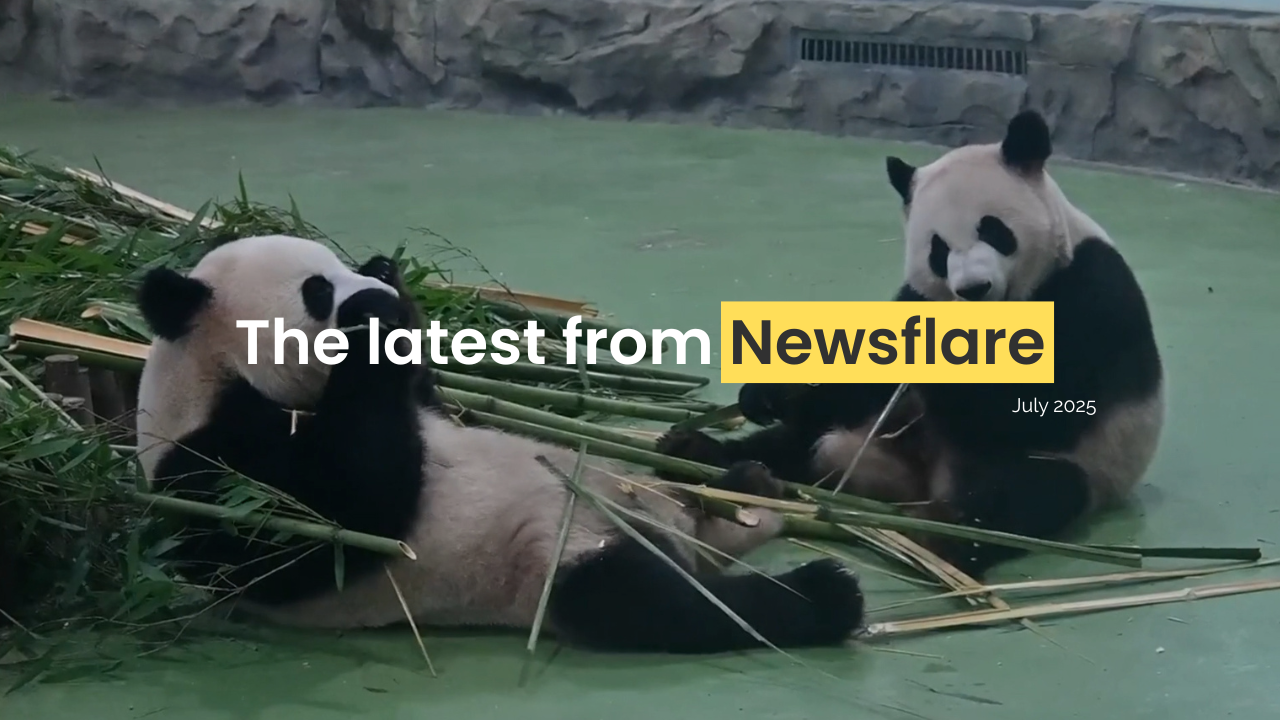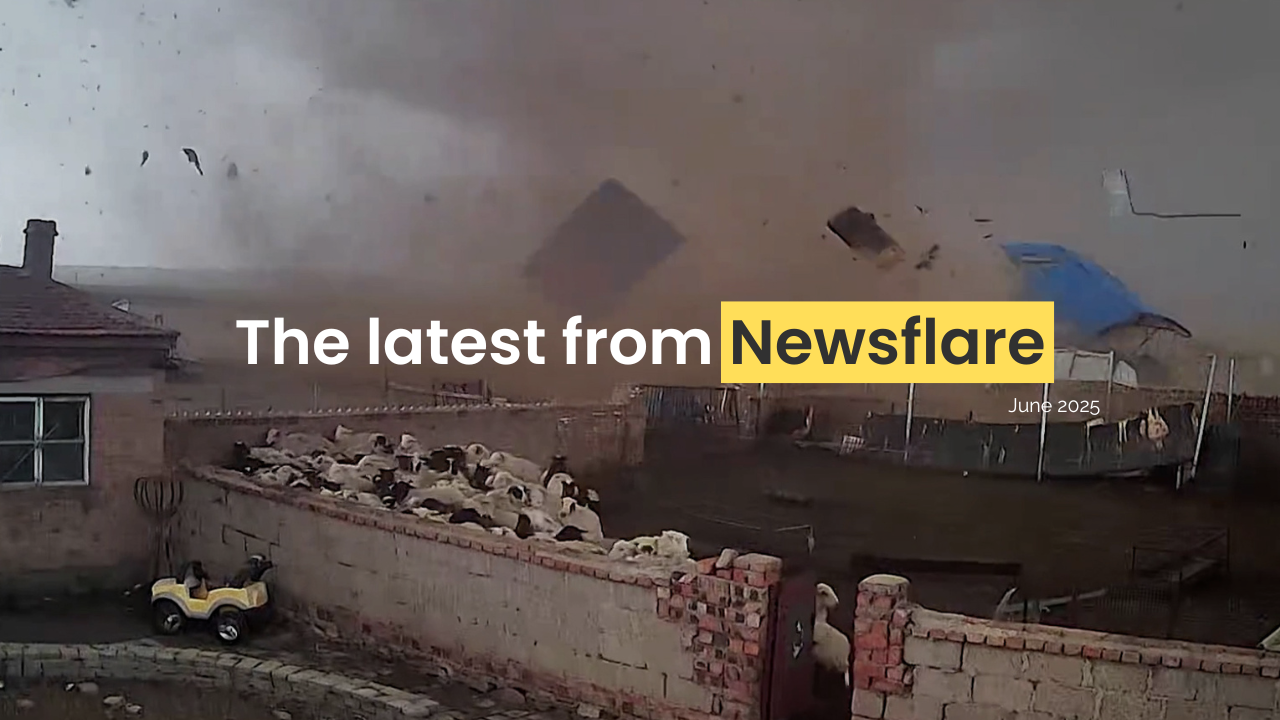Five Tips for Shooting Drone Photography
Jonathan Mitchell is a freelance photojournalist and HD camera operator who has been uploading to Newsflare since 2014. We asked him for his top tips for shooting drone photography that sells.
I purchased my first drone in the summer of 2018. At the time, I was based in the far north of Scotland and over the next year, I filmed various locations in Scotland and England to gain more experience of flying, while supplying (ground) editorial video stock footage and pictures to agencies including Newsflare.
1. Hone your craft
This allowed me to build-up a lot of practical flying experience and a modest stock collection of 4K drone clips from a variety of locations. Back then, the UK and EU rules about drone flying were ambiguous to some degree and I mainly flew in remote locations, far away from buildings and people.
Filming drone footage for most has many limitations, batteries don’t last long (and back-up batteries are not cheap) and the good old British weather often scuppers a good flight plan! I persevered though, and soon was noting down days where low wind and good lighting could allow for interesting footage and stills.
Always carry a spare battery: The drone I owned in 2018-2019 was light, but bulky (I named its case the dinosaur egg box!) and this limited operating the DJI Phantom 3 Pro in places not close to where I’d parked the car. Though as with any rookie, its limitations helped me to understand why I needed a better drone in the future and the importance of spare batteries, etc.
As I went along, I uploaded the footage to Newsflare and added the relevant description and keywords. I also uploaded a few bits of footage onto my YouTube Channel.
Due to relocating to Athens in late 2019 and the bulky nature of my drone, I decided to leave it behind and eventually sold it to a friend. But I kept on uploading and tagging clips from my archive. While I'm not flying my new DJI Mavic Mini 2, which is under 250g in weight, too much at the moment (due to logistical problems related to COVID-19), I do intend to produce a lot more drone video stock footage clips in the future.
2. Be patient
As with any stock image or video portfolio, the royalties take time to roll in. Despite the ravages of the COVID-19 pandemic - which has dented the stock photo and to some extent the video stock market - my 4K video stock footage clips have done modestly well. The first sale was direct to a production company working with Discovery Channel and was for 250 GBP for my establishing shots of Hadrian’s Wall in Northumbria were used in a documentary.
I have in the past syndicated my UK drone footage clips to a few other agencies but in general they haven't paid enough in royalties to cover expenses.
Other successes with drone shoots were with a solar farm in England, which has gone out several times and earned another £150 in net sales thus far. As I now have sufficient sales data, I can work out some averages.
3. It's a volume game
Generally-speaking, with decent light and flying conditions, plus a good location, a short drone video and photography session will return a net of around 10 euros per clip, per year. Maybe a Euro or two per year on the still images. Hence, filming a location like a famous landmark or a beautiful establishing shot of a national park can easily - over time - earn 150-300 GBP, perhaps even more than that if you double-up with stills and ground footage. The key is to film a wide variety of shots that while on location you can then upload separately in order to get the biggest possible bang for your buck.
4. Plan ahead
Flight planning is crucial when filming with a drone. UK aviation law regarding drones has over 2020 become more or less the same as EU drone law, where the emphasis is on learning the basics and being safety-conscious. Also, drone batteries will over time become useless (each one provides around 150 charges before they start to get "memory effect" and then have to be disposed of as they cause added risk to your flights.
I spend more time planning drone shoots than I do actually flying them and more still processing the footage and images (I edit in camera mostly and this is a 15-45 second video clip that if you get it right, can be uploaded without being processed in video editing software). This gives me the maximum safety for the flights and very good return on the (often substantial) investment in the operating cost (getting to and from the location, food, electricity, accommodation, etc).
Studying maps of the area you want to film in, understanding the limitations and a careful study of the airspace is crucial to keep your flight legal and safe. I would advise those new to drone piloting or with limited experience to fly only in remote areas until you have built-up greater confidence and experience.
The UK CAA web site provides lots of very good information on how to develop as a professional drone pilot, such as learning the Air Law and basic theories of avionics, which are essential. Apps like Flock Cover can provide very comprehensive insurance for your flights (another operating expense) and there are many other apps which are very useful, such as ones which display air maps, weather conditions and much more.
5. Master the art of the establishing shot
There is a large and growing international market for stock footage video clips (less so for still images) and they are becoming a standard shot in many edits of TV programmes and films. Aside from details, like a farmer harvesting their field, the establishing shot is king and has broad appeal, this can be an area or a landmark. One of my more successful clips, for example, is a snowy Establishing Shot of Cairngorms National Park, which has been licensed several times.
More often than not, bringing your ground camera kit is a good idea too. Doubling-up at a location with ground footage and/or images is always a good idea. I once filmed an Iron Age Broch in the north of Scotland, for instance. The aerial shots are spectacular. A ground pan-shot did sell for a few hundred US dollars though!
In sum, if you plan very carefully, play by the rules of the local civil aviation authorities, manage your batteries (logging the charging and discharging is essential), budget well, research the airspace and location carefully for each flight and plan for a medium to long-term return on your flights (news is a much quicker return although is often more complicated due to time-constraints), take great ground-shot straight video clips regularly and distribute them to agencies such as Newsflare where you can get a good price - then producing drone stock footage clips is the most lucrative area of video stock at the moment. It is likely it will continue to be so for the coming years.
Have some great drone footage?
Featured:
Jonathan Mitchell: https://www.newsflare.com/profile/JonathanMitchell
Special Thanks:
The Animal News Agency: https://www.newsflare.com/profile/The%20Animal%20News%20Agency







